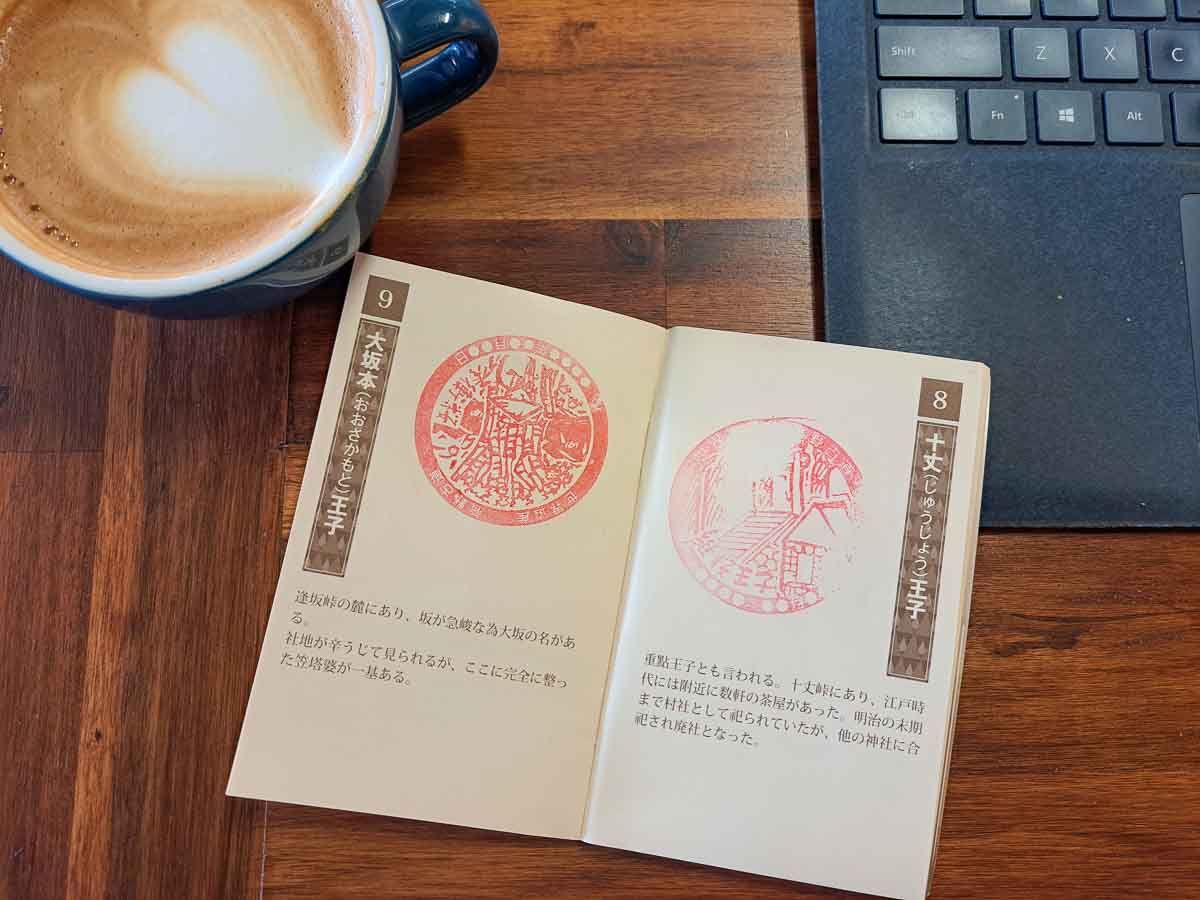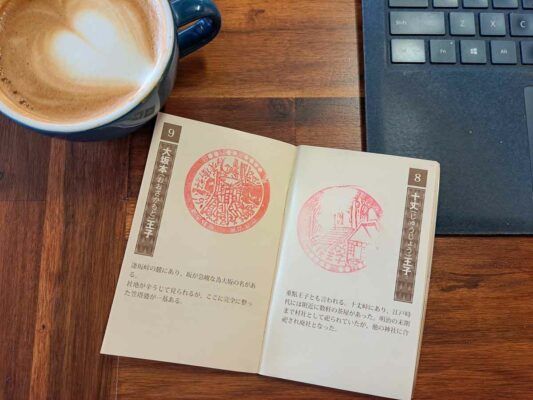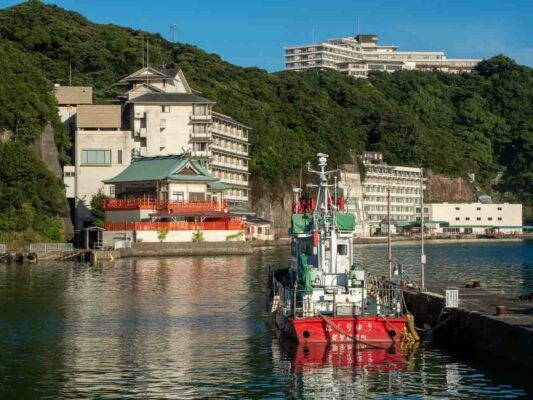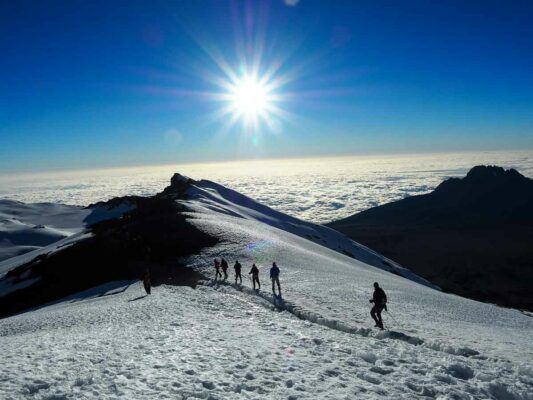No products in the cart.
When I first heard about the Dual Pilgrimage Certificate, I was immediately intrigued.
I get to do two hikes that are already on my bucket list and get an award for it!? Lets go!
The Dual Pilgrim is awarded to anyone who completes the major legs of two sister hikes, the Camino de Santiago, a month-long Catholic pilgrimage in Spain, France, and Portugal. As well as the Kumano Kodo, A 5-day Shinto/Buddhist pilgrimage in Japan.
Here’s how you can do the same:
- Dual Pilgrim Credential: This is your essential passport. Pick one up for free at various locations along the routes or designated starting points.
- Complete the Hikes: Walk the final stretch of the Camino de Santiago (at least 100km) or cycle a minimum of 200km. On the Kumano Kodo, choose a route and collect stamps as you progress.
- Document Your Journeys: Earn your Compostela certificate as proof of completing the Camino de Santiago. For the Kumano Kodo, ensure you’ve gathered the necessary stamps.
- Make it Official: Present your certificates and Credential at the end of your last pilgrimage. Visit Turismo de Santiago de Compostela (near the Cathedral) or Kumano Hongu Heritage Center or the Tanabe City Tourist Information Center.
Table of Contents
What is a Dual Pilgrim
Becoming a dual pilgrim means completing two incredible UNESCO World Heritage pilgrimage routes: the Kumano Kodo in Japan and the Camino de Santiago in Spain.
You can start with either hike. On the Camino, walk the final stretch and claim your Compostela (pilgrim’s certificate) in Santiago de Compostela. For the Kumano Kodo, choose a route and collect stamps along the way. You can present your completed Credentials and any relevant certificates at the official office upon finishing your last pilgrimage. This can be in Santiago de Compostela or at the Kumano Hongu Heritage Center or Tanabe Tourist Information Center in Japan.
Kumano Kodo Routes
You’ll have access to 4 main route options: the Nakahechi Route, Kohechi Route, Ohechi Route, and the Iseji Route.
I chose the classic Nakahechi Route, starting at Takijiri-oji and making my way towards the grand Kumano Hongu Taisha. The 38km stretched over several days, allowing me to truly immerse myself in the history and atmosphere.
Camino de Santiago Routes
There’s no single “Camino de Santiago.” Instead, it’s made up of 7 paths converging on Santiago de Compostela.
I chose the well-known Camino Frances, which starts in France.
You can also opt for the Camino Portugues to get a glimpse of Portuguese culture. If you favor a more rugged experience, the Camino del Norte follows Spain’s northern coastline.
For a greater challenge, you have the option of Camino Primitivo, which starts in Oviedo. You’ll also find quieter, lesser-known options like the Via de la Plata, Camino Ingles, and Camino Finisterre.
How To Become a Dual Pilgrim (In 3 Steps)
1. Pick Up The Dual Pilgrim Passport BEFORE You Start
To track your progress, you’ll need to have this special passport handy. It has separate sections for both the hike’s stamps. You can pick one up for free at various locations along the routes or at the starting points of your pilgrimages.

1. Complete The Pilgrimages (And Collect The Stamps!)
Camino de Santiago
While the total Camino is up to 1000km long, you technically only need to walk the last 100km to Santiago de Compostela to earn your stamp. Sarria’s a popular starting point for this stretch.
You can also cycle the final 200 km of any Camino route.
You’ll need to get your credential stamped along the way at the places you stay at each night. These are called Albergues (hostels) and Casa Rurales (Guesthouses). Just ask the innkeeper for a stamp on arrival.
Kumano Kodo
The classic Nakahechi route is the best for this as it runs right through Hongu where the certificate office is. While the Nakahechi is around 80km in total length, you only need to walk to Hongu to get your certificate, so that’s either from;
- Takijiri-oji to Kumano Hongu Taisha (about 38km).
- Or, from Nachi Falls to Kumano Hongu Taisha (about 40km).
More information here on the Kumano Travel website
Don’t forget to collect all the stamps along the way! These are located by the Oji (shrines) along the way in cute little letterboxes.
3. Make it official
Camino de Santiago (if finished last)
Pop into the Turismo de Santiago de Compostela (near the Cathedral) to register your completion. Make sure to bring your Kumano Kodo stamp booklet. You’ll be presented with your certificate, and receive a small metal badge.
Kumano Kodo (if finished last)
Visit the Kumano Hongu Heritage Center or the Tanabe City Tourist Information Center with your Kumano Kodo stamp book and completed Camino certificate.
There are a total of 7 locations where you can pickup the credential with Hongu being the most popular;
- Tanabe Tourist Information Center
- Kumano Hongu Heritage Center (inside the Kumano Hongu Taisha)
- Kumano Kodo Pilgrimage Visator Center (next to the Takijiri-oji trailhead)
- Shingu City Tourist Information Center
- Nachi-Katsuura Tourist Information Center (next to JR Kii-Katsuura station)
- Central Information Center, Koyasan Shukubo Temple Lodging Association
- Koyasan Tourist Information Center.
Why I Became a Dual Pilgrim
I love a good challenge and experiencing diverse cultures. The journey was more than just hiking. It brought me face-to-face with rich traditions and cultures, and ultimately left me with a sense of profound accomplishment.
I’d be lying if I said I didn’t want the bragging rights that came with it too.
It also gives a sense of purpose to traveling. Rather than just wandering around a foreign country, heading there on a mission to complete a hike was a great way to focus the trip (and still have plenty of time for wandering too!)
Kumano Kodo Travel Planning Cheatsheet
(This list contains affiliate links which may earn me a small comission if you decide to puchase something - thank you!)
🚑 Should I buy travel insurance for Japan?
100% YES! — Japan has “free” healthcare but it’s only for citizens! Tourists need travel insurance in case anything happens on your visit. Also be aware many policies won't cover hiking as it's a high risk activity! (that's right, check the t&c's on your complimentary credit card insurance)
I highly recommend World Nomads as you can get specific add-ons for the crazy activities you're doing – and starts at just $7 a day!
🏩 What’s the best way to book my Kumano Kodo accommodation?
Your only realy two options here are Kumano Travel and Booking.com. Its a complicated process so I wrote this guide here on the best kumano kodo accomodation options
If you don't want to figure it all out (it's meant to be a holiday after all) you can book a package tour. Here are my recommendations for both guided and self-guided.
💸How do you pay for things in Japan?
Japan may have flying robots.. but they also still use cash! So you'll want to get some folding tender out from an ATM when you land. EFTPOS / Debit / Credit Card and Paywave (contactless payments) is common at bigger businesses but small bars, and street vendors want cash.
I personally use a Wise debit card for all my international money needs as they only convert the funds when you make payment, plus they offer a much better spread (margin on the true exhange rate) than the banks do. They work in all Japanese ATMs I tried.
🚙 Do you need to rent a car in Japan?
I wouldn't reccommend it — Transport in Japan is expensive whatever mode you chose, but fortunalty the publc transport system is out of this world in terms of both freqency and coverage. If you are heading to a lot of off the beaten track places, then you may want a rental. I use Discover Cars to find the cheapest rates on rentals cars and remember you can save money if you avoid picking up at the airport.
🚆 What about the JR Rail Pass?
We didn't - but it depends on the length and itenirary of your trip. The JR Pass is expensive (and just went up in price again!) and if you're walking the Kumano Kodo you wont need it for probably 6 days straight anyway.
Do the math, but in most cases buying the train fares you need, when you need it will work out more afforably overall - and give you more flexibility (as the JR Pass doesn't cover all lines)
📲 How do I get internet/data/wifi in Japan and on the trail?
This one needs a whole nother article, but the short version is local SIM cards are cheaper but generally require a fixed term contract. Tourist 'short stay' SIMs are a bit more expensive but will give you plenty of data while your visiting and are best for solo travelllers or purchase a international SIM before you leave (I reccommend Airalo for Japan) . If you're travelling as 2 or more people, renting a pocket WIFI unit from the airport is the most economical option.
✈️ What’s the best site to buy flights to Japan?
For finding cheap flights, I recommend Skyscanner. Once you find the flight you're looking for, I'd then suggest booking directly with the carrier (even if it costs a few $$ more than with one of the agreggators/agencies).
💧Can you drink the water on the Kumano Kodo?
Yes — Japan is very clean. In all townships you'll pass through and stay along the Kumano Kodo the tap water is drinkable. If you want to drink water from the rivers and streams you generally can but should do so at your own risk. ALWAYS follow best practice and drink from fast flowing water as far up stream as possible. I drank the water and was fine.. but i'd generally recommend a Brita Water Bottle for rehydrating on the trail safely.
🎫 Do I need a visa for Japan?
Likely Not — Japan now recognises 70 countries as 'visa exempt' for short term stay. So if you're a US, UK, NZ, AU and EU passport holder you don’t need a Japansese visas. However, some other countries do (check here!). And if you plan to stay for more than 90 days (an average tourist visa length), you will need to look into the Japanese working holiday visa scheme, or the new Digital Nomad visa scheme.







